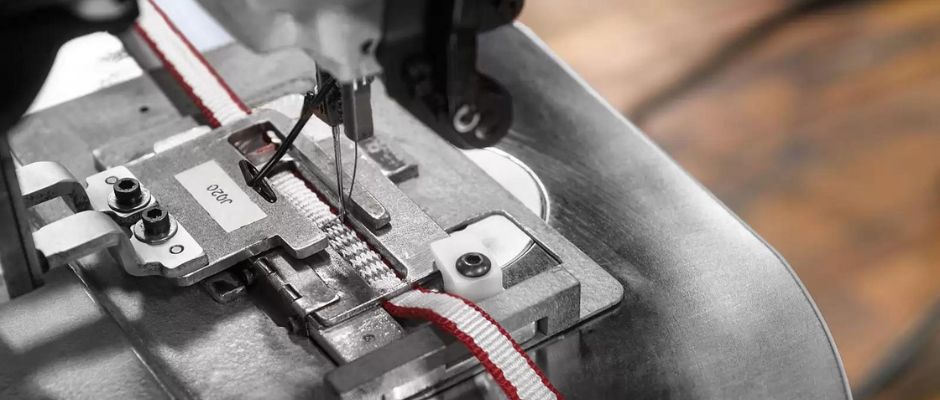In the world of webbing manufacturing, one performance fiber that is popular in the industry is Dyneema® UHMWPE.
As a leading webbing manufacturer, we want to share an overview of this fiber, including Dyneema® webbing’s applications, its strengths and weaknesses, the variations and treatments available, and the reasons why it has become a popular choice among OEMs.
What Is Dyneema® UHMWPE Fiber?
Dyneema® is a brand of UHMWPE (Ultra-High Molecular Weight Polyethylene) manufactured by Avient Corporation. It is a lightweight and high-strength material commonly used in webbing production. Its exceptional strength-to-weight ratio makes it ideal for various applications across different industries.
Dyneema® UHMWPE Webbing Strengths
- High Strength: One of the strongest fibers, Dyneema®, ensures reliable and robust performance in a wide range of applications, providing the necessary support and load-bearing capacity required in demanding scenarios.
- Lightweight: With a low density compared to many other materials, Dyneema® webbing significantly reduces the overall weight of the end product. This characteristic is particularly advantageous in applications where weight reduction is crucial. The lightweight design not only enhances user comfort but also facilitates ease of movement without compromising on strength or functionality.
- Abrasion Resistance: Dyneema® webbing is highly resistant to abrasion, minimizing wear and tear and ensuring longevity and durability in challenging environments.
- UV Resistance: Dyneema® has good resistance to UV radiation, ensuring its longevity even when exposed to sunlight. This helps prevent degradation, color fading, or weakening caused by UV rays, ensuring that it maintains its structural integrity and performance over time.
Dyneema® UHMWPE Webbing Limitations
Despite its numerous strengths, Dyneema® fiber has some limitations to consider. One of them is its tendency to exhibit creep, a gradual deformation that occurs under sustained load over time. Although Dyneema® webbing is highly resistant to abrasion, it may experience a degree of elongation or stretching under continuous stress.
Another limitation of this fiber is its limited heat resistance. While it can withstand temperatures of up to 150°C (302°F), Dyneema® webbing has a lower heat resistance compared to some other yarns, making it unsuitable for high-temperature applications.
However, it’s important to note that these weaknesses are context-dependent and may not significantly impact its performance in many applications.
Dyneema® UHMWPE Variations
Dyneema® is available in both natural (white) or black; however it can be woven with other fibers to enhance its appearance. A pigment dye can also be added to natural Dyneema®, giving the end user a wide variety of color options for branding purposes.
Dyneema® UHMWPE Webbing Applications
As a high-performance material, Dyneema® has replaced steel in various industries owing to its superior qualities. Due to its high strength-to-weight ratio, Dyneema® is commonly used in many industries, including Safety and Outdoor Equipment Some of the most common applications include:
- Safety Equipment: The safety equipment sector relies on Dyneema® for the manufacturing of lifelines and other fall protection gear, providing crucial support to safeguard individuals working at heights. Its strength-to-weight ratio ensures that safety equipment remains lightweight and comfortable without compromising on safety.
- Military and Defense: Its strength and resistance to cuts and abrasion make Dyneema® an excellent choice for military applications, including load-bearing equipment and tactical gear.
- Outdoor Gear: Dyneema® finds extensive use in outdoor equipment like climbing equipment, tents, and hammocks. While its exceptional resistance to abrasion ensures that it can withstand rough terrains and repeated use without losing its integrity, its low moisture absorption property prevents the webbing from becoming heavy and waterlogged, maintaining its strength and functionality even in wet environments.
Conclusion
Dyneema® webbing has proven to be an excellent choice for OEMs across various industries. Its exceptional strength, lightweight design, and versatility make it a reliable and efficient material for a wide range of applications. Despite its limitations, the benefits offered by Dyneema® webbing make it a popular choice among manufacturers seeking high-performance webbing solutions.
At Sturges Manufacturing, we have extensive experience working with Dyneema® UHMWPE and other types of industrial fibers, including Kevlar®, Vectran®, and Nomex®. If you’re an established OEM looking for custom webbing and straps, reach out to our team. From design and production to sewing and testing, we can be the one-stop shop for your webbing needs.

